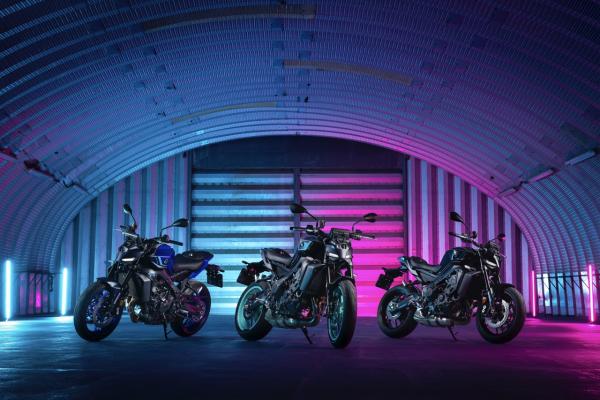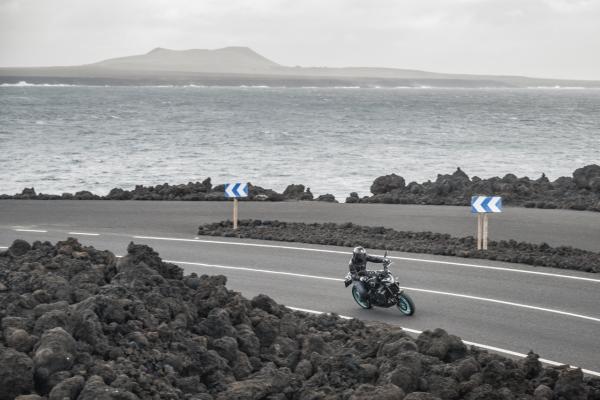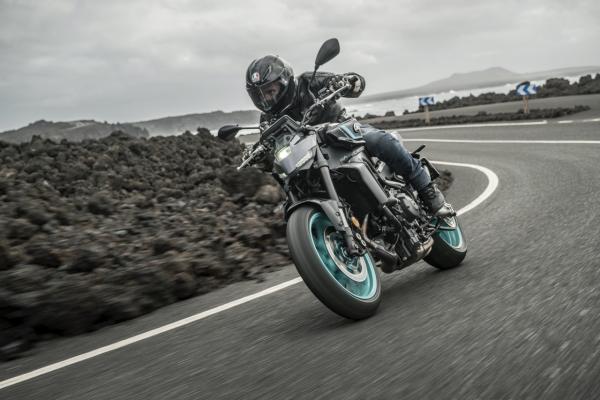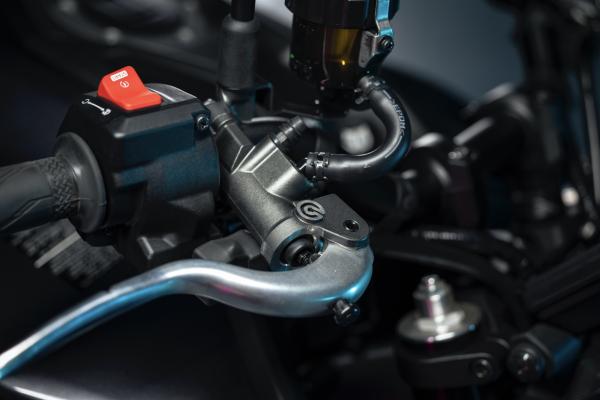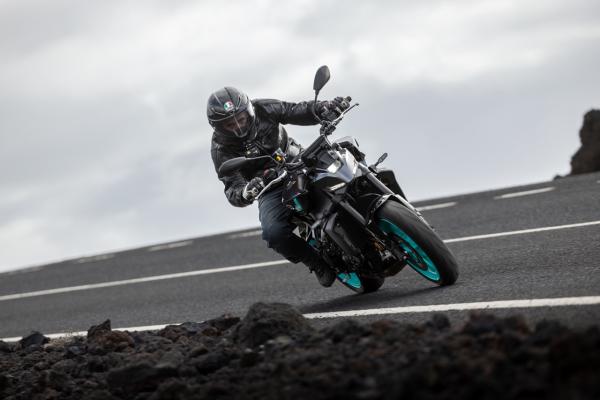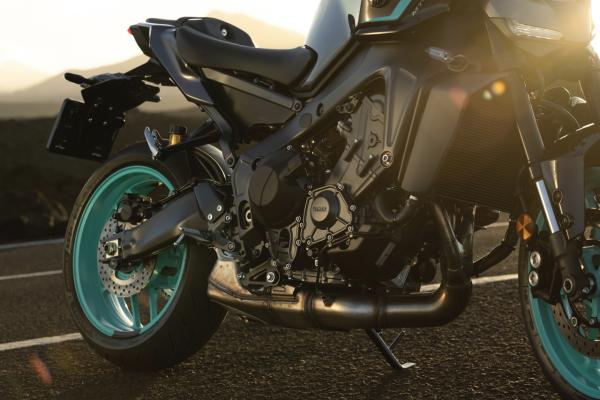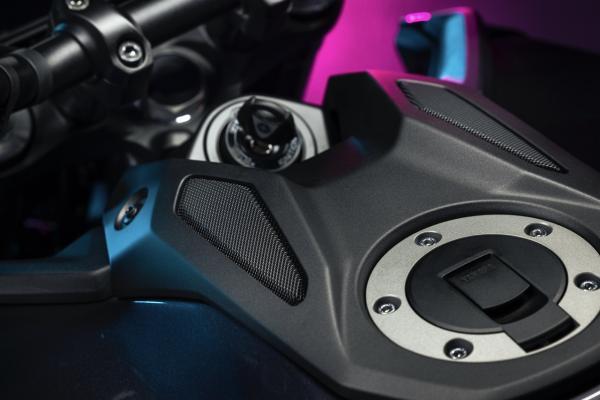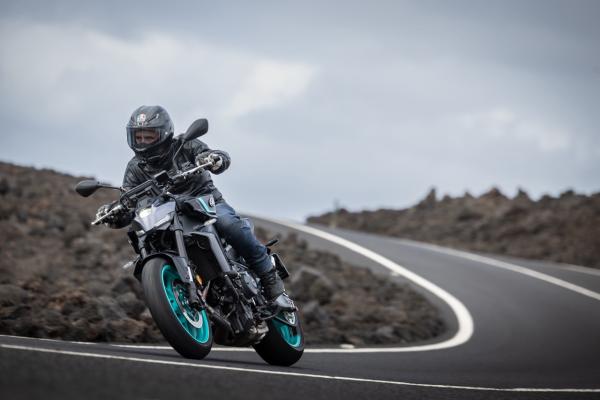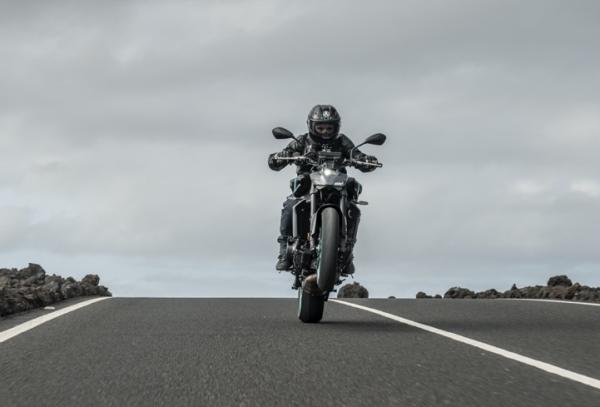2024 Yamaha MT-09 Review - Dark Side of Japan Updated For 2024
The heavily updated Yamaha MT-09 has now been ridden, and here is how the new bike performs on the road

Member for
54 years 8 monthsYamaha has used the 2024 model year to update one of its best-selling nakeds, as the 2024 Yamaha MT-09 is released with improved technology, chassis hardware, styling tweaks, and some aural improvements for this year.
What’s new on the MT-09
The most obvious change to the MT-09 for 2024 is the styling of the bike, and if it seems a little soon after the last visual refresh for the model to be getting another update, well, that’s because it is! The MT-09 was visually enhanced at the start of the 2021 model year, but it wasn’t exactly what you’d call warmly received. The Cyclops-like front end was a drastic update to the model compared to the more friendly-looking twin headlight styling found on the 2020 model, and the general consensus wasn’t positive.
That changes for 2024, and the headlight, while not a carbon copy of the 2020 model, is a much more familiar-looking and easy-on-the-eye design. The new look features a centrally mounted LED projector headlight (that’s the small rectangular item) that is flanked by two LED positioning lamps (DRLs) and the whole lot is housed in a new headlight binnacle that is said to have a more harmonious relationship with the bike’s fuel tank.
That’s another item that has been tweaked for 2024, and while there are visual updates to the fuel tank, it’s also gained some acoustic changes for this year. Overall the new tank is sharper, with more clearly defined edges and is said to promote a ‘more engaged and free riding position’. The sound changes are something we’ve seen from Yamaha already with the MT-10 and XSR900, and they take the shape of acoustic ducts mounted on the top of the tank that direct the induction howl up towards the rider. The airbox of the bike also features revised intake trumpets which are said to "accentuate the high frequency sounds while maintaining a linear throttle response".
Other changes for 2024 include a new Brembo radially-mounted master cylinder for the front brake, a revised rider triangle, new rear brake and gear levers, split rider and passenger seats, revised settings in the upside-down forks and a new linkage on the rear shock which is said to provide a more ‘dynamic feeling’ while cornering.
2024 Yamaha MT-09 price, colours and availability
Pricing for the new MT-09 is confirmed at £10,100, meaning it is a small rise from the £9,810 for the outgoing 2023 model. Test rides on the 2024 model are available through your local Yamaha dealer, and the new MT-09 will be available in Midnight Cyan, Icon Blue and Tech Black colourways.
What’s it like to ride?
The launch ride of the MT-09 took place on the volcanic island of Lanzarote, with a full day of riding and about 130 miles to cover. Pulling out of the hotel everything feels very familiar. The riding position has changed for 2024, although it’s not really a noticeable change, and seems to be more about transferring the rider’s weight over the front (to help improve feel and feedback) rather than an exercise in making the bike more comfortable.
With a few miles of town work to cover before we hit the twisties, I take my time to get familiar with the new switch gear and TFT - and it’s very good news. The switchgear is a million times better than before, and Yamaha has finally binned off the fiddly and frustrating jogwheel from the righthand switchcube. In its place, you have a proper four-way joystick on the left handlebar with a mode button on the right switchcube.
It’s all much more intuitive and makes switching modes on the fly much easier. The TFT is also new, and bigger at five inches. Within the TFT the menus and bike settings have also been improved and it’s a much nicer thing to use and a lot less fussy than before. Riding modes on offer are Street, Sport, Rain, and two custom modes. Electronics you can play with are traction control, slide control, lift control, engine power modes, quickshifter, and the bike’s ABS which you can’t turn off completely without pulling the fuse.
One element of the switchgear I’m not keen on is the new indicator design. Instead of a traditional rocker switch, there is a large lightswitch sort of arrangement and I just found it clumsy to use. It has self-cancelling indicators now (which is great) and there’s a feature that flashes the indicator three times if you tap the bottom.
The issue is that you have to be so accurate to get it to activate for three flashes, I almost always just end up leaving them on. Then to cancel the indicator you press the button in the same direction, but I am finding it much too easy when riding to hit the other indicator sending the flasher in the opposite direction. What now ensues is me erroneously flicking the indicators back and forth, left and right until I take my eyes off the road to rectify the issue. Self-cancelling indicators are great, but just give us a normal indicator switch please Yamaha.
With the boring stuff out the way, we finally hit some twisties, and just as before the Yamaha CP3 inline three-cylinder is showing itself to be one of the best sub-1000cc powerplants on the planet. It’s super punchy, with torque everywhere and a greatly improved throttle connection. Picking up the throttle on the exit of a tight corner is now much smoother, without any of the snatchiness you could encounter on the old bike.
The fully adjustable (at the front) KYB suspension is also impressing me, and while the changes here are small, 1Nm stiffer fork springs and a new linkage on the rear shock, they are providing the bike with a more refined and sophisticated feel. Only one section of road really seemed to upset the bike, and to be fair it was a very fairly patchy piece of road with a washboard surface to it. Overall though it is markedly better handling than before, still with all the agility and hyper-direct steering of before, just now with more control and composure.
Yamaha has also reduced the amount of head-shaking the bike was prone to when accelerating hard out of a corner. There’s still a tiny amount, and it’s making me think that an aftermarket steering damper (like the one found on the MT-09 SP) would be the cherry on top of what is already a very capable handling package.
One of the biggest and most noticeable changes for 2024 is the front brake. The new Brembo radially mounted master cylinder has totally transformed the way the bike performs. The previous bike had a very sharp front brake, and it seemed like only a couple of millimetres of lever travel would conjure up huge amounts of braking power. The new bike is much better on this front and you now get a lovely progressive lever with superbike levels of braking power on command.
The ABS is the usual cornering system (itself a trickle-down technology from the MT-10 and R1) and as you’d expect, it’s very good. The roads in Lanzarote are extremely grippy though, and it takes a rain shower after the lunch stop to have me detecting any intervention from the front ABS - the rear is as you’d expect easier to trigger.
I’m noticing the clutch on my bike can be a bit grabby, which could be down to the bike only having 900 miles on it (most of which will have been spent on the back wheel) and the lever feels very long. The bite point is right at the end of the lever travel, not an issue when you’re up to speed but it is making fine control at low speed look a bit clumsy. I’ll have to wait to ride one in the UK to see if this is a prevalant issue.
The gearbox of the new MT-09 is improved, and with more dogteeth, it engages sweetly, and there have been zero false neutrals over the course of the day. The quickshifter on the 2024 model is the third-generation system and now allows for upshifts when decelerating and downshifts when accelerating. The quickshifter is now also claimed to now shift from a minimum speed of 9mph. On both of these fronts, I found the system to work some of the time, but not 100 per cent of it.
The upshifts and downshifts will sometimes engage as they should, although, on the odd occasion, I have to help the bike along with a blip or a chop of the throttle. The 9mph minimum speed for shifting was also hit and miss, and sometimes I’d have to get up to 15 or 20mph before the system would allow for gear changes via the quickshifter. It sounds like I’m saying this isn’t an improvement on the old bike but I’m not - the quick shifter and gearbox both feel nicer than before, it’s just some of the claims made by Yamaha couldn’t be confirmed every time I shifted.
One big and very noticeable change for this year is the engine sound of the bike. The MT-09 has always sounded great (what triples don’t?) but now the new acoustic vents on the top of the tank, matched to two tuned inlet trumpets, mean the induction howl is fired up from the airbox and directed inside your lid, straight to your lugholes. It’s a feature I first encountered on the MT-10, and just like its bigger brother, the system means you get all the lovely noise of the bike without broadcasting your hooliganism to the entire valley!
On the comfort front, the new MT-09 seems like a nicer place to be than the previous generation machine and the new seat (which features separate rider and passenger perches) is a big improvement over the old design. It’s reshaped for 2024 and seems to have more supportive padding. The pillion perch also means you have a little cushion to bolster yourself on when you hammer the throttle and hang on for dear life!
Yes, it still loves a wheelie!
One thing the MT-09, MT-07 and MT-10 are known for is their playful, never-say-never demeanour. It’s not as serious or focused as the Street Triple R or RS, and that’s something that is not lost on the new model. It’ll still hoik the front wheel skywards on the throttle in first and second gear, and the new lift control (not wheelie control) means you can hold the bike at a desired height without the worry of flipping the thing and ending up in a lava field. It’s important to note, as the MT-09 has always been the wildchild of the middleweight naked pack, and while I’ve talked a lot about how Yamaha has made it more refined in a number of areas, that fun factor is very much still at the heart of the bike.
Should you buy a 2024 Yamaha MT-09?
There's still a lot to love about the new MT-09, and while there are lots of small changes for 2024, they add up to make a big difference to the bike. It’s sitting in the sub-thousand cc segment in a nice place too, and offers something that you don’t get with Street Triple or KTM Duke - owing to that fun factor that I mentioned.
The new styling is great (much improved over the old model) and the riding experience overall has been taken up another level thanks to the chassis, suspension and braking tweaks. The biggest draw for me though is the price, and while the new bike has crept over the £10,000 mark, it’s still only a smidgen more than the outgoing stock MT-09. You couldn’t go out and buy a Brembo master cylinder for the price difference, let alone all the other changes and tweaks that have improved the model for this year.
All in all, Yamaha’s engineers set out to improve the bike on every front and having ridden it on the roads in Lanzarote, I can confirm they have. The new MT-09 is a riot.
2024 Yamaha MT-09 specification
Engine | |
Type | 4-stroke, Liquid-cooled, DOHC, 4-valves, In-line three-cylinder |
Capacity | 890 cc |
Power | 119.0 PS (117.3 bhp) @ 10.000 rpm |
Torque | 93.0 Nm (68.5 lb ft) @ 7.000 rpm |
Bore x Stroke | 78.0 × 62.1 mm |
Chassis | |
Front Suspension | Upside-down telescopic fork, Ø 41 mm (fully adjustable) |
Rear Suspension | Link suspension, swingarm |
Front Travel | 130 mm |
Rear Travel | 117 mm |
Front Brake | Hydraulic dual disc, Ø 298 mm - four-piston caliper |
Rear Brake | Hydraulic single disc, Ø 245 mm - two-piston caliper |
Front Tyre | 120/70ZR17M/C (58W) tubeless |
Rear Tyre | 180/55ZR17M/C (73W) tubeless |
Dimensions and Weights | |
Fuel Capacity | 14 litre |
Seat Height | 825 mm |
Wheelbase | 1,430 mm |
Wet Weight | 193 kg |
UK Price | £10,100 |



